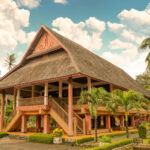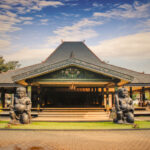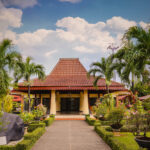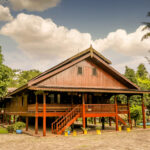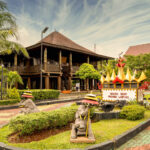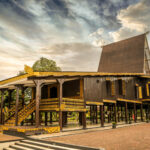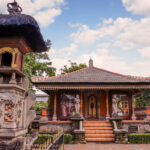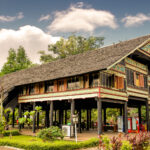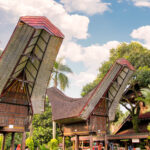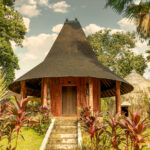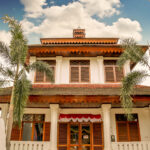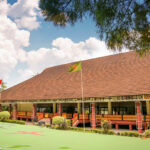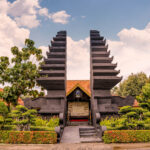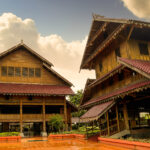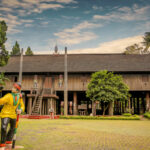Tabea! Nusu Mae di Ruma Tau Mailoko oo!
Maluku, famously known as the “Land of a Thousand Islands” and celebrated for its rich spice heritage, brings together a vibrant blend of ethnic groups and cultural wealth within the Indonesian archipelago. Ethnic groups such as the Ambon, Nuaulu, Kei, Tanimbar, Buru, Banda, and Kisar inhabit this province, which is composed of large islands including Seram, Buru, Yamdena, and Wetar, as well as smaller island clusters such as Ambon, Lease, Banda, Kei, and Aru. Culinary delights here are infused with aromatic spices, featuring dishes like Papeda, Sambal Colo-colo, Ikan Kuah Pala Banda, Kohu-Kohu, and various sago-based snacks.
At TMII, the Maluku Pavilion features the Baileo House, a traditional gathering place used for deliberation and community discussions. It symbolizes the union between two ancestral alliances in Maluku: Pata Siwa and Pata Lima. This Siwalima philosophy forms the basis of Malukan community life and is reflected in the architectural structure of the Baileo, which includes nine (siwa) pillars at the front and back, and five (lima) pillars on the left and right sides.
A rich variety of Malukan arts and cultural artifacts are displayed at the Gallery of Cultural and Featured Products. Here, visitors can find traditional Maluku clothing, wedding garments from the Ambon and Tanimbar communities, Kapitan attire, and Nae Baileo ceremonial dress. The gallery also features traditional weapons such as parang and Salawaku (shield); musical instruments including Tifa, Totobuang, Tahuri, and Suling; a replica of a clove oil distillation device; Tanimbar woven textiles; and unique crafts made from cloves, pearls, and seashells.
The pavilion also presents the Latu House or King’s House, the residence of the village head. Rectangular in shape, this house includes a front porch for receiving male guests, a central room for welcoming female visitors, bedrooms, and a rear area that serves as both the kitchen and dining/living space.
DID YOU KNOW?
Cloves and nutmeg have attracted global attention to Maluku since ancient times. Like treasures, these spices were sought after by nations around the world—from the Portuguese, Spanish, and English to the Dutch. Through the spice trade, the people of Maluku once gained access to valuable items such as textiles, silk, and rare porcelain that were otherwise scarce during that era.


